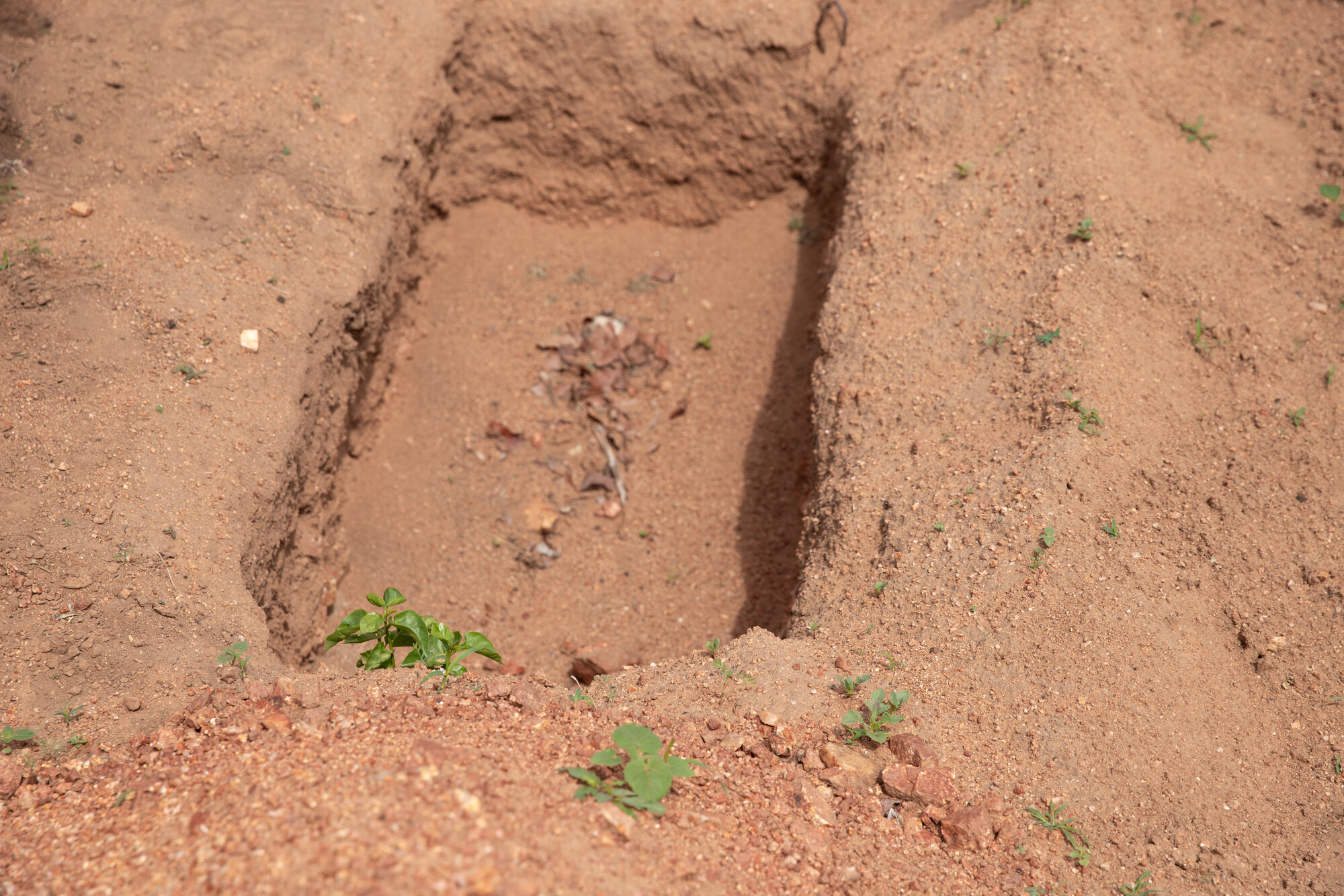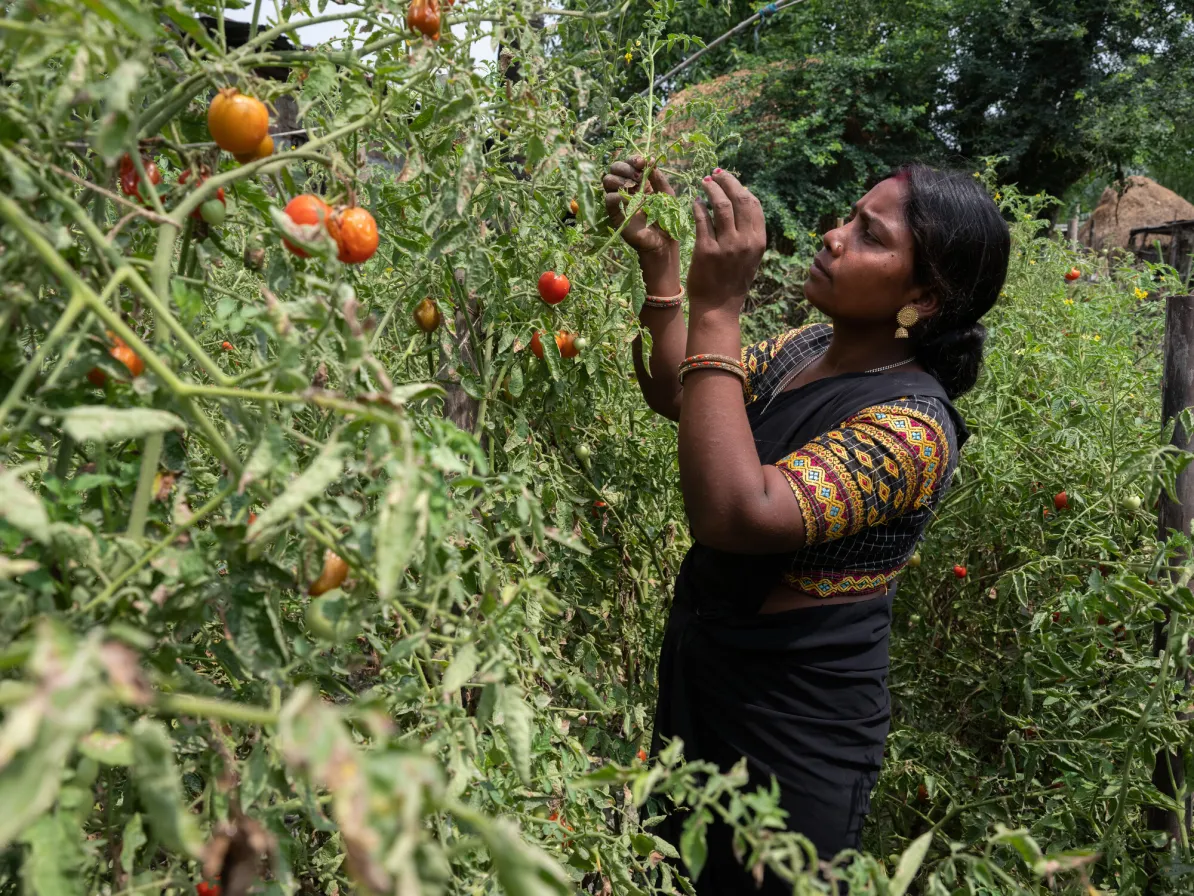Farmers helping farmers in Zimbabwe
In Zimbabwe, lead farmers share techniques to adapt to a changing climate.

Tshwaliteng Dube and Christopher Magwala are longtime family friends. Their homesteads in the Gwanda district of Zimbabwe neighbor each other, and their children are even married, making them in-laws as well. They’ve lived and farmed beside each other longer than they can remember.
They’re also lead farmers in a project called Locally-Led Indigenous Nature-based Solutions for Climate Change Adaptation in Zimbabwe (or LINCZ), which is a multiyear MCC project funded by Global Affairs Canada.
On their own farms, Dube and Magwala are implementing conservation agriculture techniques they’ve learned through MCC partner Brethren in Christ Compassionate and Development Services (BIC-CDS).
And they’re teaching those techniques to fellow farmers in the surrounding community, hoping to help others also strengthen their resilience to the effects of climate change and drought.
“We act as bridges,” Magwala says. “We’re helping other farmers do conservation agriculture as well.”
We act as bridges. We’re helping other farmers do conservation agriculture as well.”
Christopher Magwala
Rural Gwanda district, located in Matabeleland South province, is in a region characterized by lower rainfall and is prone to droughts.
In recent years, however, rainfall has become even more unpredictable, making it difficult for farmers to know when to plant their crops. Yields have declined, and many farming families in the region are having to buy more food, a significant strain on already-scarce resources.
In times of severe drought, like in 2023 and 2024, water and food must be prioritized for families, leaving little for the animals traditionally used by farmers to plow the earth ahead of planting. Many animals have either died or else lack the strength to pull farming implements.
It has become clear to farmers like Dube and Magwala that the way they farm needs to change.
They can no longer rely on oxen to pull a plow, and making the most of every drop of the scarce rain that falls has become essential. Nothing can go to waste.
Enter conservation agriculture or, as farmers call it, CA. This method of farming aims to make the most of scarce resources by preserving the quality of soil, reducing erosion and maximizing the efficiency of available water. Its three key principles are disturbing the soil as little as possible; covering the soil through mulch; and rotating crops through different fields or intercropping in a single field.
While Dube was already familiar with some principles of conservation agriculture, the training she and Magwala have received through BIC-CDS offered new techniques.
One practice is digging infiltration pits. These pits or trenches capture water when it rains. Then that water will filter into the soil horizontally and provide moisture to plants nearby.

Another key technique is the use of planting basins. Seeds are planted in small depressions that are evenly spaced throughout the field. These depressions, like the infiltration pits, capture water when it rains and concentrate it near the seedlings, helping them to grow.
“If there is rain, no matter how little it is, with CA you get results,” Dube says.
Learning how to grow plants with significantly reduced tilling has been especially useful to Dube and Magwala, as they no longer have to secure access to an animal to pull a plow.
But the best part about conservation agriculture, according to Dube and Magwala?
It produces better results.
For those who follow all the practices of conservation agriculture, Dube says, the difference can be seen.
In maize or corn, for instance, the size of a cob grown using conservation agriculture is visibly bigger than those grown with traditional techniques, she says.
Yet, while conservation agriculture techniques help crops to thrive under harsh conditions and allow farmers to maximize small amounts of water, they still require at least a little bit of water.
While droughts have always been a reality in Zimbabwe, in 2023 and 2024, most of sub-Saharan Africa, including Zimbabwe, was hit with a severe drought that resulted in widespread crop failure and depletion of water sources like rivers and streams.
“It’s just too much,” says Gugulethu Nyathi, project officer for BIC-CDS. “You know, farmers failing to harvest anything, even for the small grains, and the rate at which livestock has been dying.”
In the face of extremely challenging conditions, the staff of BIC-CDS and farmers like Dube and Magwala are doing what they can.
Despite growing conditions that are far from ideal, they can still conduct trainings for other farmers and experiment with different ways of laying out their own crops and implementing these techniques.
And there have even been some benefits when it comes to introducing new practices. At first, Magwala says, encouraging others to try the new techniques was a big challenge.
Now, with the high costs of climate change and drought, they’re more interested.
And, in the fields of Magwala, Dube and others, they’re seeing what conservation agriculture can bring.
“There was a time where it only rained thrice,” Magwala says. “Those with CA, they got something. Those without CA, they never got something.”
Annalee Giesbrecht is advocacy engagement animator and coordinator for the Peace & Justice Office of MCC Canada.
Top photo: As a lead farmer, Tshwaliteng Dube is able to share the techniques she has learned from MCC partner Brethren in Christ Compassionate and Development Services to help other women who farm and are grappling with the impact of climate change. (MCC photo/Annalee Giesbrecht)
Help farmers feed their communities and families
Will you help farmers build food security through techniques like conservation agriculture?



